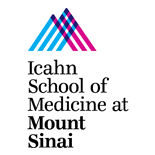预约演示
更新于:2025-05-07

NX Development Corp.
更新于:2025-05-07
概览
标签
神经系统疾病
内分泌与代谢疾病
血液及淋巴系统疾病
小分子化药
关联
1
项与 NX Development Corp. 相关的药物靶点- |
作用机制 光敏剂 |
最高研发阶段批准上市 |
首次获批国家/地区 美国 |
首次获批日期1999-12-03 |
5
项与 NX Development Corp. 相关的临床试验NCT06907485
A Multicenter Study to Assess the Feasibility of Gleolan (ALA / Aminolevulinic Acid HCl) in Pediatric Brain Tumor Patients After Delayed Administration
This clinical trial focuses on pediatric patients aged 2 up to 18 years of age with a new or recurrent pediatric brain tumor, suspected to be either a high-grade or low-grade glioma, and scheduled for surgical removal. 5-aminolevulinic acid (5-ALA) is FDA-approved for improving brain tumor visualization in adults during surgery through fluorescence, enabling more complete removal of the tumor. This study aims to evaluate the feasibility of administering 5-ALA to pediatric brain tumor patients and to assess the quality of tumor fluorescence during surgery in this patient population.
For the clinical trial, the patient will orally ingest 5-ALA 6 to 12 hours before brain surgery. All study participants will be provided standard medical care for removal of the brain tumor. All children enrolled in the study will be closely monitored prior to, during, and after surgery to ensure there are no reactions to the study drug. 5-ALA can make the patient more sensitive to sunlight and direct indoor lighting, referred to as photosensitivity, and can cause a sunburn-type reaction. It is for this reason that patients will be kept in subdued light conditions for 48 hours following surgery. Study participation starts once the patient is enrolled in the study until 6-month post-surgery.
For the clinical trial, the patient will orally ingest 5-ALA 6 to 12 hours before brain surgery. All study participants will be provided standard medical care for removal of the brain tumor. All children enrolled in the study will be closely monitored prior to, during, and after surgery to ensure there are no reactions to the study drug. 5-ALA can make the patient more sensitive to sunlight and direct indoor lighting, referred to as photosensitivity, and can cause a sunburn-type reaction. It is for this reason that patients will be kept in subdued light conditions for 48 hours following surgery. Study participation starts once the patient is enrolled in the study until 6-month post-surgery.
开始日期2025-06-01 |
申办/合作机构 |
NCT05804370
A Phase 3 Multicenter Study of Gleolan™ (Aminolevulinic Acid Hydrochloride) to Enhance Visualization of Tumor in Patients With Suspected Newly Diagnosed or Recurrent Epithelial Ovarian Cancer
This Phase 3 study is designed to investigate the safety, diagnostic performance, and clinical usefulness of Gleolan for the real-time detection and visualization of epithelial ovarian cancer tumors during debulking surgery. The study is planned to run for about 18 months with individual study participation lasting about two (2) weeks.
开始日期2024-05-30 |
申办/合作机构 |
NCT05101798
The Role of 5-Aminolevulinic Acid Fluorescence-Guided Surgery in Head and Neck Cancers: a Pilot Trial
This study allows head and neck cancer surgeons to specifically visualize cancerous cells apart from normal healthy tissue. 5-aminolevulinic acid (5-ALA) is a safe and effective FDA-approved agent successfully used by neurosurgeons for FGS of different brain tumors is given to the patients preoperatively. Using specific wavelengths of light as well as specialized magnified lenses the surgeons use this technique to assist in tumor resection.
开始日期2021-09-14 |
申办/合作机构 |
100 项与 NX Development Corp. 相关的临床结果
登录后查看更多信息
0 项与 NX Development Corp. 相关的专利(医药)
登录后查看更多信息
4
项与 NX Development Corp. 相关的文献(医药)2021-03-01·Cell Stress and Chaperones
Correction to: A robust strategy for proteomic identification of biomarkers of invasive phenotype complexed with extracellular heat shock proteins
作者: Griffiths, Steven G ; Ezrin, Alan ; Dewey, Lisa ; Jackson, Emily ; Doucette, Alan A
2019-11-01·Cell Stress and Chaperones3区 · 生物学
A robust strategy for proteomic identification of biomarkers of invasive phenotype complexed with extracellular heat shock proteins
3区 · 生物学
Article
作者: Griffiths, Steven G ; Jackson, Emily ; Dewey, Lisa ; Ezrin, Alan ; Doucette, Alan A
Brain Sciences
The NXDC-MEN-301 Study on 5-ALA for Meningiomas Surgery: An Innovative Study Design for the Assessing the Benefit of Intra-Operative Fluorescence Imaging
Article
作者: Wyse, Joseph W. ; Ezrin, Alan ; Bendok, Bernard R. ; Holling, Markus ; Sackman, Murray L. ; Stummer, Walter ; Cox, Ashley ; Renfrow, Sara L. ; Widhalm, Georg ; Vogelbaum, Michael A. ; DeSena, Salvatore
6
项与 NX Development Corp. 相关的新闻(医药)2024-06-21
LEXINGTON, KY / ACCESSWIRE / June 21, 2024 / NX Development Corp. (NXDC) is pleased to announce a significant milestone. Following the FDA's Orphan Designation for the diagnostic management of ovarian, fallopian tube, and primary peritoneal cancer earlier this year, our first patient was recently enrolled in and successfully completed her surgery with Gleolan as part of our ongoing OVA-302 study.
Salvatore DeSena, MD, CEO of NX Development Corp., responded enthusiastically: "NXDC is thrilled to reach this milestone so quickly in our ovarian development program. Moreover, our second patient has already been scheduled for surgery. Kudos to the NXDC team and our external investigators for these accomplishments!"
Dr. Ulrich Kosciessa, Chairman of the Board of NXDC and CEO of photonamic GmbH & Co KG., adds, "As a group, we are proud to develop Gleolan for fluorescence-guided surgery in oncological diseases. With our OVA-302 study initiated in the US, we aim to expand additional programs into other geographies, e.g., Europe and Japan, and into additional indications in the future. It is exciting to see how fascinated our investigators are about using our technology."
Gleolan is an optical imaging agent indicated in patients with glioma (suspected World Health Organization Grades III or IV on preoperative imaging) as an adjunct for visualization of malignant tissue during surgery. It has gained clinical recognition for its use in this regard.
About NX Development Corp:
NX Development Corp., a wholly owned subsidiary of photonamic GmbH & Co. KG, a member of the SBI Holdings Inc. Group (Tokyo, Japan), is dedicated to revolutionizing cancer care through innovative solutions and groundbreaking developments in fluorescence-guided surgery.
For media inquiries, please contact:
mediamarketing@nxdevcorp.com
Contact Information
Raquel R.
adminpeopledept@nxdevcorp.com
Alicia M.
mediamarketing@nxdevcorp.com
SOURCE: NX Development Corp.
View the original press release on newswire.com.
孤儿药临床研究
2024-03-05
LEXINGTON, KY / ACCESSWIRE / March 5, 2024 / NX Development Corp. (NXDC) has achieved another milestone as we proudly announce the recent granting of orphan-drug status by the U.S. Food and Drug Administration (FDA) for Gleolan (aminolevulinic acid HCl). This designation was provided for the "real-time detection and visualization of epithelial ovarian tumors during debulking surgery."
NXDC Logo
Logo of NXDC
Dr. Salvatore DeSena, CEO of NX Development Corp., shared this excitement, stating, "On behalf of our entire team, I am proud to announce that NX Development Corp. secured orphan-drug status for Gleolan in ovarian, fallopian tube, and primary peritoneal cancer. This achievement demonstrates NXDC's commitment to exploring new and innovative uses for Gleolan to help patients and surgeons in their fight against these cancers."
"This important milestone underlines the capabilities of aminolevulinic acid HCl in fluorescence-guided surgery. As a group, we aim to expand this further, also to other countries as well, providing support to patients and healthcare professionals combating cancer globally," said Dr. Ulrich Kosciessa, Chairman of the Board of NXDC and CEO of photonamic GmbH & Co KG. (Pinneberg, Germany), parent company to NXDC.
Gleolan is an optical imaging agent indicated in patients with glioma (suspected World Health Organization Grades III or IV on preoperative imaging) as an adjunct for the visualization of malignant tissue during surgery. Gleolan has gained clinical recognition for its use in visualizing malignant glioma tissue during surgery.
About NX Development Corp.: NX Development Corp., a wholly-owned subsidiary of photonamic GmbH & Co. KG., a member of the SBI Holdings Inc. Group (Tokyo, Japan), is dedicated to revolutionizing cancer care through innovative solutions and groundbreaking developments in fluorescence-guided surgery.
About Gleolan
Contact Information
Raquel R.
adminpeopledept@nxdevcorp.com
Alicia M.
mediamarketing@nxdevcorp.com
SOURCE: NX Development Corp.
View the original press release on newswire.com.
孤儿药
2024-02-04
·赛柏蓝
作者 | 骎丹翼来源 | 药智网2024年,美国将有34款药物的关键专利到期,其中强生的重磅炸弹药物Xarelto(rivaroxaban)最值得关注。以下为笔者盘点的关键专利到期的药物信息,包含销售商、获批时间、适应症、销售额等数据。1.Auryxia(ferric citrate)销售商:Keryx Biopharmaceuticals,Inc.获批时间:2014年9月5日适应症和用途:控制透析患者的血清磷水平、未接受透析的成年慢性肾病患者的缺铁性贫血。关键专利到期时间:2024年2月18日药物专利数量:14销售额:预计2023年净产品收入1.75-1.8亿美元2.Spravato(esketamine hydrochloride)销售商:Janssen获批时间:2019年3月5日适应症和用途:患有难治性抑郁症(TRD)的成人、具有自杀想法或行为的重度抑郁症(MDD)成人的抑郁症状。关键专利到期时间:2024年3月5日药物专利数量:6销售额:2023年前三季度4.83亿美元3.Phexxi(citric acid;lactic acid;potassium bitartrate)销售商:Evofem获批时间:2020年5月22日适应症和用途:女性避孕。关键专利到期时间:2024年3月6日药物专利数量:4销售额:2022年1.68亿美元4.Exparel(bupivacaine)销售商:Pacira Pharms获批时间:2011年10月28日适应症和用途:长效酰胺类局麻药,用于术后镇痛。关键专利到期时间:2024年3月22日药物专利数量:9销售额:2023年净产品收入5.38亿美元5.Ionsys(fentanyl hydrochloride)销售商:The Medicines Co获批时间:2015年5月22日适应症和用途:芬太尼离子电渗透皮系统,用于对需要阿片类镇痛的住院成人进行急性术后疼痛的短期管理。关键专利到期时间:2024年4月1日药物专利数量:86.Contrave(bupropion hydrochloride;naltrexone hydrochloride)销售商:Nalpropion获批时间:2014年9月10日适应症和用途:一种氨基酮类抗抑郁药和阿片类拮抗剂的组合,可作为低热量饮食和增加体力活动的辅助手段,以实现长期体重管理。关键专利到期时间:2024年4月21日药物专利数量:207.Natroba(spinosad)销售商:Parapro获批时间:2011年1月18日适应症和用途:多种体外寄生虫适应症。关键专利到期时间:2024年4月28日药物专利数量:28.Rydapt(midostaurin)销售商:诺华获批时间:2017年4月28日适应症和用途:FLT3突变的急性髓系白血病和系统性肥大细胞增多症。关键专利到期时间:2024年4月28日药物专利数量:2销售额:2022年4.2亿美元9.Tralement(cupric sulfate;manganese sulfate;selenious acid;zinc sulfate)销售商:Am Regent获批时间:2020年7月2日适应症和用途:口服或肠内营养不可能、不足或禁忌时,作为肠外营养的锌、铜、锰和硒的来源。关键专利到期时间:2024年4月30日药物专利数量:110.Radicava(edaravone)销售商:Mitsubishi Tanabe获批时间:2017年5月5日适应症和用途:肌萎缩侧索硬化症(ALS)。关键专利到期时间:2024年5月5日药物专利数量:4销售额:2021财年1.9亿美元11.Omontys(peginesatide acetate)销售商:Takeda获批时间:2012年3月27日(已退市)适应症和用途:成人透析患者慢性肾病(CKD)所致贫血的治疗。关键专利到期时间:2024年5月12日药物专利数量:612.Ulesfia(benzyl alcohol)销售商:Shionogi获批时间:2009年4月13日适应症和用途:非神经毒性头虱。关键专利到期时间:2024年5月12日药物专利数量:613.Adasuve(loxapine)销售商:Alexza Pharmaceuticals获批时间:2012年12月21日适应症和用途:与精神分裂症或躁郁症相关的躁动。关键专利到期时间:2024年5月20日药物专利数量:514.Children's Advil Allergy Sinus销售商:葛兰素史克获批时间:2004年2月24日适应症和用途:由过敏或普通感冒引起的打喷嚏、瘙痒、流泪、流鼻涕、鼻塞、鼻窦充血、头痛、疼痛或发烧。关键专利到期时间:2024年5月25日药物专利数量:115.Gleolan(aminolevulinic acid hydrochloride)销售商:NX Development Corp.获批时间:2017年6月6日适应症和用途:神经胶质瘤手术期间的光学成像。关键专利到期时间:2024年6月6日16.Ilevro(nepafenac)销售商:Harrow Eye获批时间:2012年10月16日适应症和用途:缓解白内障眼部手术后的眼睛疼痛、刺激和发红。关键专利到期时间:2024年6月8日药物专利数量:317.Vyleesi(Autoinjector)(bremelanotide acetate)销售商:Palatin Technologies获批时间:2019年7月8日适应症和用途:性欲减退症。关键专利到期时间:2024年6月21日药物专利数量:518.Triptodur kit(triptorelin pamoate)销售商:Azurity获批时间:2017年6月30日适应症和用途:性早熟。关键专利到期时间:2024年7月29日药物专利数量:119.Endari(L-glutamine)销售商:Emmaus Medical获批时间:2017年7月7日适应症和用途:镰状细胞性贫血症。关键专利到期时间:2024年7月7日药物专利数量:1销售额:2023年前三季度2250万美元20.Dalvance(dalbavancin hydrochloride)销售商:艾伯维获批时间:2014年5月23日适应症和用途:由敏感革兰氏阳性菌(包括耐甲氧西林金黄色葡萄球菌(MRSA))引起的急性细菌性皮肤和皮肤结构感染(ABSSSI)的成人患者。关键专利到期时间:2024年7月22日药物专利数量:421.Kimyrsa(oritavancin diphosphate)销售商:艾伯维获批时间:2021年3月15日适应症和用途:成人急性细菌性皮肤和皮肤结构感染(ABSSSI)。关键专利到期时间:2024年8月6日药物专利数量:322.Orbactiv(oritavancin diphosphate)销售商:Melinta Therapeutics获批时间:2014年8月6日适应症和用途:急性细菌性皮肤和皮肤结构感染(ABSSSI)。关键专利到期时间:2024年8月6日药物专利数量:323.Oriahnn(Copackaged)销售商:艾伯维获批时间:2020年5月29日适应症和用途:绝经前妇女与子宫肌瘤(纤维瘤)相关的大量月经出血。关键专利到期时间:2024年9月10日药物专利数量:724.Orilissa(elagolix sodium)销售商:艾伯维获批时间:2018年7月24日适应症和用途:与子宫内膜异位症相关的中度至重度疼痛。关键专利到期时间:2024年9月10日药物专利数量:1025.Somatuline Depot(lanreotide acetate)销售商:Ipsen获批时间:2014年12月16日适应症和用途:胃肠胰神经内分泌肿瘤。关键专利到期时间:2024年9月15日26.Sustol(granisetron)销售商:Heron Therapeutics获批时间:2016年8月9日适应症和用途:化疗引起的恶心/呕吐。关键专利到期时间:2024年9月28日药物专利数量:5销售额:2023年前三季度净产品销售额930万美元27.Prialt(ziconotide acetate)销售商:TerSera获批时间:2004年12月28日适应症和用途:治疗需要鞘内治疗以及对其他治疗(例如全身镇痛药、辅助治疗或IT吗啡)不耐受或无效的患者的严重慢性疼痛。关键专利到期时间:2024年10月1日药物专利数量:328.Ascor(ascorbic acid)销售商:Mcguff获批时间:2017年13月3日适应症和用途:坏血病。关键专利到期时间:2024年10月2日29.Fluorodopa F18(fluorodopa f-18)销售商:Feinstein获批时间:2019年10月10日适应症和用途:对疑似帕金森综合症的成年患者的某些神经细胞进行视觉检测。关键专利到期时间:2024年10月10日30.Byetta(exenatide synthetic)销售商:Amylin Pharmaceuticals/Eli Lilly&Co.获批时间:2005年4月28日适应症和用途:2型糖尿病。关键专利到期时间:2024年11月4日销售额:2019年1.8亿美元31.Exem Foam Kit(air polymer-type a)销售商:ExEm Foam Inc.获批时间:2019年11月7日适应症和用途:检测已知或疑似不孕女性的输卵管通畅性。关键专利到期时间:2024年11月7日32.Nourianz(istradefylline)销售商:Kyowa Hakko Kirin Inc.获批时间:2019年8月27日适应症和用途:帕金森病。关键专利到期时间:2024年11月13日药物专利数量:4销售额:2021年1亿美元33.Macrilen(macimorelin acetate)销售商:诺和诺德获批时间:2017年12月20日适应症和用途:成人生长激素缺乏症的诊断。关键专利到期时间:2024年12月20日药物专利数量:134.Xarelto(rivaroxaban)销售商:Janssen获批时间:2011年7月1日适应症和用途:抗血栓。关键专利到期时间:2024年12月20日药物专利数量:5销售额:2022年24.7亿美元Ref.1.Constantino,A.K.Big pharma is at a crossroads,as J&J,Merck and others prepare to lose heaps of revenue from blockbuster drugs.CNBC.28.01.2024.2.Friedman,Y.United States:These 47 Drugs Face Patent Expirations and Generic Entry From 2024–2025.DrugPatentWatch.com.Retrieved on 31.01.2024.END医药代表交流群扫描下方二维码加入医药代理商转型交流群扫描下方二维码加入
专利到期
100 项与 NX Development Corp. 相关的药物交易
登录后查看更多信息
100 项与 NX Development Corp. 相关的转化医学
登录后查看更多信息
组织架构
使用我们的机构树数据加速您的研究。
登录
或

管线布局
2025年11月06日管线快照
管线布局中药物为当前组织机构及其子机构作为药物机构进行统计,早期临床1期并入临床1期,临床1/2期并入临床2期,临床2/3期并入临床3期
批准上市
1
登录后查看更多信息
药物交易
使用我们的药物交易数据加速您的研究。
登录
或

转化医学
使用我们的转化医学数据加速您的研究。
登录
或

营收
使用 Synapse 探索超过 36 万个组织的财务状况。
登录
或

科研基金(NIH)
访问超过 200 万项资助和基金信息,以提升您的研究之旅。
登录
或

投资
深入了解从初创企业到成熟企业的最新公司投资动态。
登录
或

融资
发掘融资趋势以验证和推进您的投资机会。
登录
或

生物医药百科问答
全新生物医药AI Agent 覆盖科研全链路,让突破性发现快人一步
立即开始免费试用!
智慧芽新药情报库是智慧芽专为生命科学人士构建的基于AI的创新药情报平台,助您全方位提升您的研发与决策效率。
立即开始数据试用!
智慧芽新药库数据也通过智慧芽数据服务平台,以API或者数据包形式对外开放,助您更加充分利用智慧芽新药情报信息。
生物序列数据库
生物药研发创新
免费使用
化学结构数据库
小分子化药研发创新
免费使用



